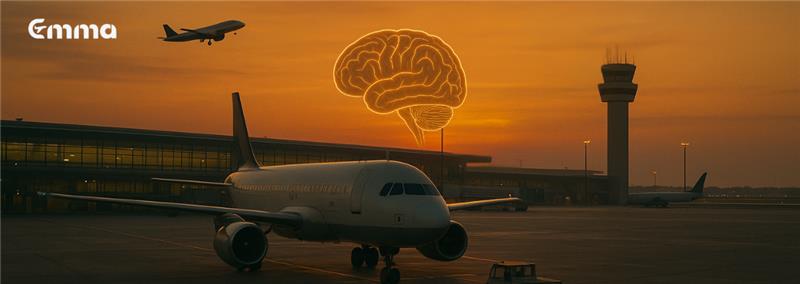Sustainability: Why the Aviation Industry’s Biggest Challenge Is Not COVID-19

With the entire industry caught in a downward spiral and putting up their hopes on subsidies and vaccinations, another big challenge looms ahead. The challenge of sustainability lies in the requirements that programs like CORSIA and other exercises (similar to the Green Deal) put on airlines and airports. The requirements are quite strict which means that aviation stakeholders need to cut down emissions back to ‘old’ (pre-2020) levels which not only endangers the continuous growth of aviation (now still in recovery mode) but also requires airlines, airports and global aviation authorities to rethink how they will achieve this expected decrease in emissions.
A-CDM allowed and allows for better use of resources and capacity. The average return on investment for A-CDM implementation, in terms of both the process and the platform needed to follow up on all dashboard elements, is believed to be 18 months. This is quick and is clearly explained in light of the efficiency gains and everything that more efficiency brings along. Hence, the actual ROI should be even higher if CapEx can be saved during the years after implementation.
To say that air traffic providers, airlines, airports and aviation authorities have not done anything about the environment would be misleading. All are very conscious that things need to be done but do not seem to be aligned about how, who and where. This is where the big danger lies. If CORSIA targets are only seen as the responsibility of one stakeholder, then we lose a lot of potential for efficiency.
CORSIA means that the aviation industry needs to commit to a near carbon-neutral growth of aviation emissions by 2027 compared to 2019 which, in itself, is a challenge given the expected growth figures post-COVID. Most of these savings will come from revisiting (and reducing traffic on) certain routes, introducing greener airplanes but one key aspect involves what happens on the ground. Every element in this chain (from ATC to ground handler to airliner to airside manager) needs to collaborate. There is a need to move away from the past setup where silos remained silos and no cross-silo thinking existed. Industries often have a habit of falling back to old habits. If CORSIA targets need to be achieved, there is to be no ‘he’, ‘she’ or ‘they’, but only ‘us’. Within this, the role of the government will have an even greater role to play.
What the aviation industry needs is auto-regulation but also good common sense. As in a playground where it is clear that not everyone can play with the same toys at the same time, we need to agree upon a set of rules so that everyone gets access to resources. In the air, this already exists thanks to a heavy regulated environment. The big challenge is to implement this on the ground where we need to redefine the rules of the playing field. Roles and responsibilities need to be redefined and everybody needs to take part in creating cost savings; avoiding useless time (and energy) from being lost on the airfield is essential.
Even though an airport is only responsible for five percent of all aviation emissions, much can be done to decrease that percentage. For this, a good orchestration of how different players use the airport stands the best chance to help reduce further the overall CO2 emissions. This will, in itself, help airports to become carbon neutral.
Introducing an ACDM (Airport Collaborative Decision Making) concept or ACDM-like concepts are critical towards ensuring that all players contribute towards sharing data and that this data can lead to finding and eliminating substantial inefficiencies. If we do not have the full picture of what is happening at our airport, then it is unwise to assume that we can improve. Hence, everything starts with the right dashboard information fed by the right stakeholders and most importantly, an understanding of the key takeaways along with how they can lead to substantial efficiency improvements.
That will then drive the freeze and reduction of these emissions. Companies like EMMA support airports and airport stakeholders in finding new ways to reduce their carbon footprint by eliminating inefficiencies; they also help create savings in turnaround times and in doing so, apply a much more orchestrated approach that leads to cost reductions and a better passenger experience. Why say no to sustainability when it can be combined with cost reduction and passenger experience in one easy and implementable approach.
Want to know more? Contact us on info@emma.aero.



